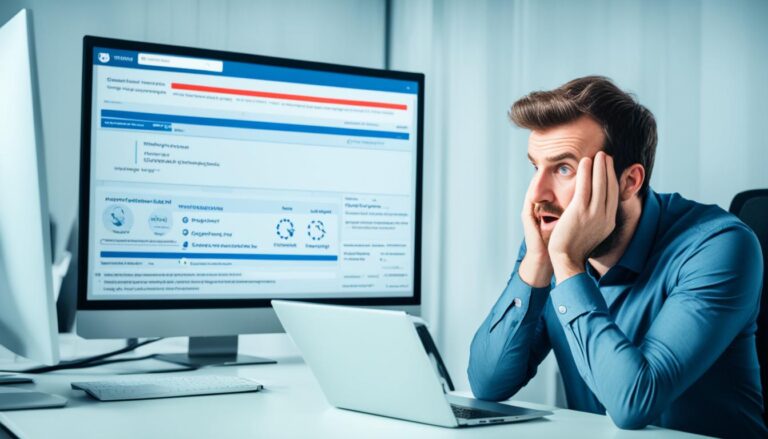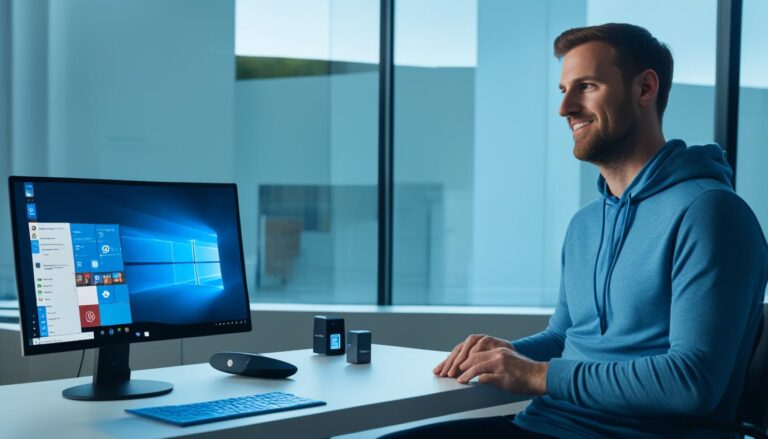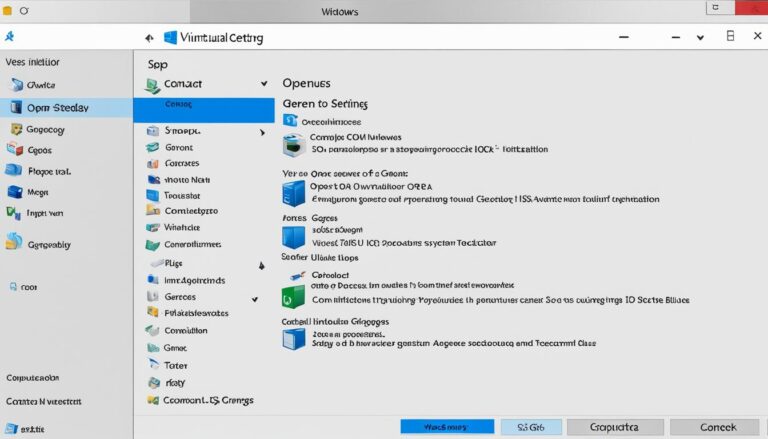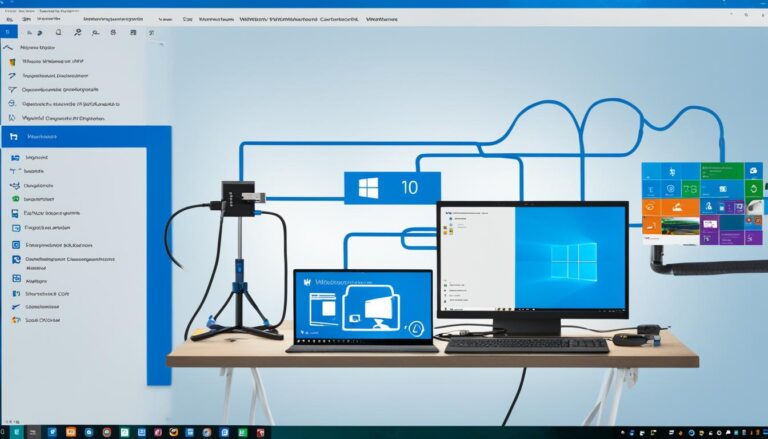If you want to install Windows 10 on Linux Mint without USB, you’re in the right place. This guide will show you how to have both operating systems on your computer.
Having Linux Mint and Windows 10 on the same computer has many benefits. It lets you choose between the two at boot time. You can use the unique features of both, run certain apps or tools available on only one, and work with software or hardware that might not support the other.
To get Windows 10 onto Linux Mint, use a tool called UNetbootin for Windows. This method doesn’t need a USB drive and makes things simpler. Just download UNetbootin, pick the Linux Mint ISO file you wish to install, select “USB Drive” but choose your hard drive instead. After finishing, reboot, select “UNetbootin” from the boot menu, and then “Try Mint”. Make sure there’s enough space on your Windows partition for Linux Mint.
In the next parts of this guide, we’ll explore the advantages of dual booting Linux Mint with Windows 10. We’ll give detailed installation instructions, help solve common problems, and share tips for successful dual-booting.
Dual Booting Linux Mint with Windows 10: The Benefits and Considerations
Dual booting Linux Mint with Windows 10 lets you have both OSes on the same computer. You can pick which one to boot into each time. There are several positives and things to be aware of with this setup.
Benefits of Dual Booting
- By dual booting Linux Mint and Windows 10, you get the best of both worlds. Linux Mint has a user-friendly environment and lots of free apps. Windows 10 supports a wide variety of software and popular apps.
- Some programs only work on a specific OS. Dual booting lets you use these unique tools without needing extra hardware.
- There might be software or devices that perform better on one OS. Dual booting helps ensure everything runs smoothly, no matter the requirement.
Considerations for Dual Booting
Though dual booting Linux Mint with Windows 10 is beneficial, there are critical things to remember:
- It’s vital to partition your hard drive correctly. This means giving each OS enough space. Good partitioning helps avoid data loss and ensures both OSes run well.
- Always back up your data before starting a dual boot setup. This step is crucial for protecting your files in case something goes wrong.
“When dual booting, it’s crucial to allocate enough space for each OS and have a backup plan in place to protect your data.”
Keeping these benefits and precautions in mind, you can enjoy dual booting Linux Mint with Windows 10. It minimises installation issues, letting you make the most of both operating systems.
Steps to Dual Boot Linux Mint with Windows 10
Want to run Linux Mint and Windows 10 on the same computer? Just follow these steps to get both operating systems installed smoothly.
Step 1: Prepare Your System
First, back up all your files to keep them safe. Also, check that you have enough space on your computer for both systems.
Step 2: Create a Bootable USB Drive
You need to make a USB drive with the Linux Mint installation on it. Tools like Rufus or Etcher can help you make this bootable drive.
Remember, the USB should have at least 8GB of space for the Linux Mint ISO.
Step 3: Install Linux Mint
Plug the USB into your PC and restart it. Find the boot menu to boot from the USB. Select “Install Linux Mint” and follow the prompts on your screen.
Step 4: Partition Your Hard Drive
While installing Linux Mint, you’ll divide your hard drive. Create a partition for Linux Mint. Make sure there’s still room for Windows 10. You might have to make the Windows partition smaller.
Step 5: Install Windows 10
After Linux Mint is in place, put in your Windows 10 installer and boot up again. Follow the steps to get Windows 10 installed on its own partition.
Step 6: Configure the Dual Boot Menu
With both OS installed, it’s time to sort the dual boot menu. Go into BIOS or UEFI settings. Make sure it boots with the Linux Mint loader first. This lets you pick which OS to start up.
Step 7: Enjoy Your Dual Boot System
Well done! You now have Linux Mint and Windows 10 on one machine. Enjoy switching between them as needed.
Dual Boot Linux Mint with Windows 10: Compatibility Chart
| Operating System | CPU | RAM | Storage |
|---|---|---|---|
| Linux Mint | Intel Core i3 or equivalent | 4GB | 20GB free space |
| Windows 10 | Intel Core i5 or equivalent | 8GB | 40GB free space |
Troubleshooting Common Issues After Dual Booting Linux Mint
After setting up Linux Mint alongside Windows 10, you might face some issues. Usually, the install goes well, but problems can pop up. Here are steps to fix these and make sure dual booting works well:
1. GRUB Bootloader Issues
Not seeing the GRUB bootloader is a typical issue after dual booting Linux Mint. Here’s how to fix it:
- Restart your computer and go into the BIOS/UEFI settings.
- Check the boot order is right, with GRUB as the main bootloader.
- If it’s still not working, try reinstalling GRUB. Use a Linux Mint live USB and terminal commands for this.
2. Windows Updates Disrupting Dual Boot
Windows updates can mess up your dual boot with Linux Mint. To stop this, you can:
- Turn off automatic updates in Windows 10. Go to Settings > Update & Security > Windows Update to change this.
- Check for updates yourself. Make sure they don’t clash with important tasks or Linux Mint startup.
- Keep both systems up to date to avoid compatibility problems.
3. WiFi or Audio Not Working
Sometimes, WiFi or audio might not work right after dual booting. Here’s what you can do:
- For WiFi, make sure you have the right drivers. Check the Linux Mint forums or their official guides for help.
- For audio issues, look at the settings in both systems. Make sure the right sound devices are chosen.
- Updating the kernel or finding new drivers may fix WiFi or audio problems. Always back up your data before making changes.
If you have other issues or can’t fix these ones, reach out to the Linux Mint community or experienced users. They offer help based on your system and the specific issues.
Dual booting Linux Mint and Windows 10 can give you a great computing experience. By fixing common issues and keeping up with updates, you can use both operating systems on one machine without troubles.
Conclusion
Setting up Windows 10 alongside Linux Mint without a USB gives you the best of both on one computer. Just follow the easy guide and keep potential problems and fixes in mind. Remember to backup your data, make the right partitions, and check everything is compatible before you start.
With both Windows 10 and Linux Mint working together, you get to enjoy what each system offers. Use the wide range of apps in Windows. Or the stable, adaptable environment of Linux Mint. This setup lets you effortlessly switch between the two.
If you want a full computing experience with Windows 10 and Linux Mint’s benefits, installing Windows 10 on Linux Mint without USB is great. Follow the guide, sort out any issues, and explore what you can do with this dual-boot setup.
FAQ
Can I install Windows 10 on Linux Mint without a USB?
Yes, you can install Windows 10 on Linux Mint without using a USB. This is possible by using a software called UNetbootin for Windows. Just follow the detailed step-by-step guide provided above.
What are the benefits of dual booting Linux Mint with Windows 10?
Dual booting Linux Mint with Windows 10 lets you use both systems on the same computer. This way, you can choose which one to start with. It lets you use the best features of both systems. You also get to use apps and tools unique to each OS. It’s helpful when some software or hardware only works well with one of the systems.
How do I dual boot Linux Mint with Windows 10?
To dual boot Linux Mint with Windows 10, just follow the provided step-by-step guide. It will show you how to partition your hard drive properly. The guide also walks you through installing both operating systems.
What are some common issues I may encounter after dual booting Linux Mint?
After dual booting Linux Mint, you might face some problems. You could boot into the wrong OS, face bootloader issues, or have grub configuration troubles. Look at the troubleshooting steps in the guide for solutions to these problems.
Is it possible to enjoy the benefits of both Windows 10 and Linux Mint through a dual-boot setup?
Yes, by using the guide above and following its troubleshooting tips, you can have a successful dual-boot setup. This setup lets you enjoy what both Windows 10 and Linux Mint offer on a single machine.












